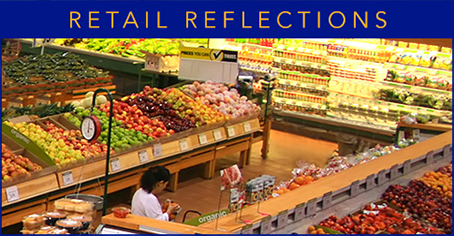It’s quite remarkable how online shopping has become a significant part of the total retail food shopping experience. It’s a validation of the point that convenience is one of the principal motivators in influencing consumer behavior.
But instore shopping is still where most of the food retail dollars are coming from, and it often appears many of the attributes that contribute to an excellent instore experience are being neglected.
What may be worse is a lack of experience for retail buyers to know what these attributes might be. Here are a few merchandising “basics” I was taught over many years in store operations and merchandising.

First, a buyer is an “agent for the customer” and must do everything possible to enhance the store buying experience. A successful profit and loss statement is the result of being a customer advocate. A buyer is NOT the customer of a supplier. Both the buyer and the supplier have the SAME customer—the person shopping in the store.
Buyers, here’s an important note: your suppliers know more about their product than you do. They know when an item is at its peak and they know when it should be promoted. Yes, you may need to filter out some noise from time to time, but a collaborative relationship with suppliers will ensure the optimum experience for consumers. And by the way, it’s okay if suppliers make a profit on their products.
Next, resist the urge to (always) take a price reduction in margin. Margins are important to performance, but passing along a price reduction to customers is the best way to enhance the shopping experience. Price and value are a key motivator in influencing consumer behavior.
Don’t sacrifice product integrity for the sake of saving labor dollars. Exceeding load limits in refrigerated cases, failure to insist on good product handling and rotation practices, not over-stocking and piling out a display of ripe tomatoes, etc. are all operational disciplines that need to be taught and followed to create the best possible consumer shopping experience.
Speaking of operations, consider teaching the people who gather items for online shoppers how to select fruits and vegetables. A can of beans may be a can of beans, but this does not apply to fresh produce. Pickers are often in such a hurry to fulfill their lists they grab whatever’s convenient. This then negates indulgence—another of the four motivating factors in influencing consumer behavior. It’s so important to ensure the items a customer buys taste great.
Remember: price point and turns go hand in hand. It’s one thing to increase the size and location of a particular item to have it become a feature, but if the price point doesn’t stimulate purchases in a timely manner, what’s left is old, unappealing product in a feature position. This leads to the last point.
Delight and surprise customers with your merchandising. Too often, buyers will merchandise their features according to margin. I was taught a phrase many years ago about what a feature should say to a customer: “What time is it and what’s important?”
For example, a buyer may get a great buy on sweet corn in February, but sweet corn in February is not top of mind for consumers. At a time when it’s more challenging to get customers to shop in a store in the first place, displays must be seasonal, items at their peak of flavor, and priced in a way to “wow” the customer—and—stay in stock.
While online shopping is clearly here to stay, physically shopping in a store will always maximize the opportunity to display and sell fresh produce. So with the new year, it’s a great time to get back to the basics of instore retailing to drive the consumption of fresh fruits and vegetables.
This is the Retail Reflections column from the January/February 2023 issue of Produce Blueprints Magazine. Click here to read the whole issue.



